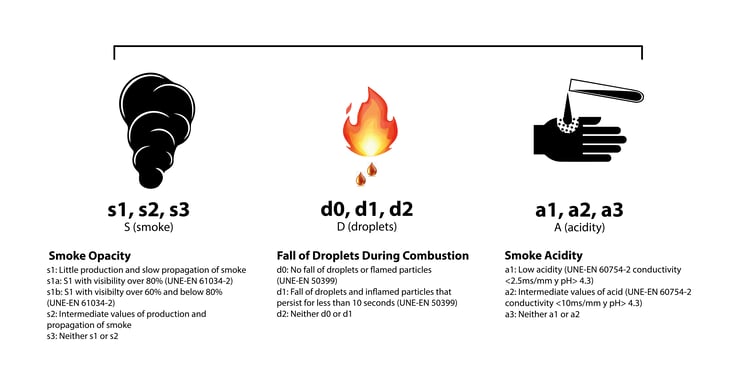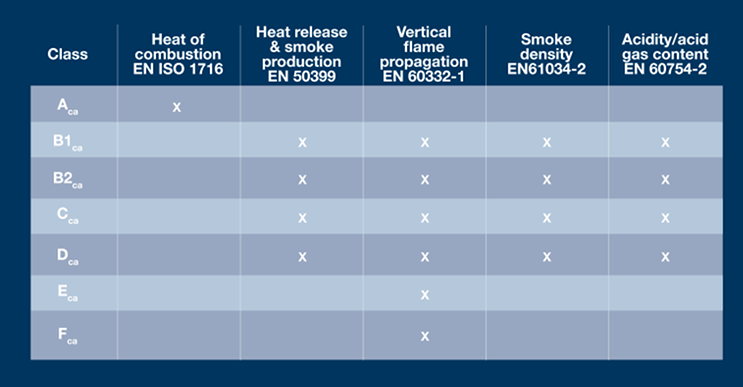 Cable manufacturers and suppliers are required to meet specific classifications for the products they sell around the world, and label it as such for their customers. The standards for testing, and criteria for complying with new standards, are updated frequently, with a new regulation announced in mid-2017.
Cable manufacturers and suppliers are required to meet specific classifications for the products they sell around the world, and label it as such for their customers. The standards for testing, and criteria for complying with new standards, are updated frequently, with a new regulation announced in mid-2017.
Under the European Construction Products Regulation (CPR), all cable manufacturers and suppliers are now required to apply CE marking to all cables permanently installed in all household, commercial or industrial buildings or civil engineering work in the European Union. The standard for cables, EN 50575, defines the test standards for testing the ‘Reaction to Fire’ performance of a cable and also the method of classifying this performance.
This new set of regulations applies to power, communications and fiber optic cables no matter where they are being manufactured.
The main objective of the CPR is to increase safety in buildings and ensure the health protection of individuals. The regulation is intended to help with the comparison of different products so that the most suitable product can be selected for specific installation projects.
All manufacturers of copper or fiber optic cables, who are placing them on the European market, must test, classify and label their products to the CPR and the cable standard. Here we’ll break down what needs to be done and how PPC is complying with this new CPR regulation.
Testing
Testing must be performed by an authorized body or laboratory. These labs are expensive to set up and need to be supervised by the regulating body.
The main criteria of flame propagation and heat release is tested according to EN 60332-1-2 (small scale) and EN 50399 (large scale) burn testing. There are additional criteria for smoke opacity, fall of droplets during combustion and smoke acidity. For Class E and F, the testing required is a burn test, and for the higher classes, smoke and toxicity is measured.

Classification
Classification is based on the use of Euro classes, which are uniform assessment classifications that reflect real-life environments for building products. For cables, the Euro classes define the Reaction to Fire performance. The relevant Euro classes for the CPR, ranking highest to lowest are: Aca; B1ca; B2ca; Cca; Dca; Eca and Fca.
Once a product is tested by the laboratory, manufacturers are issued with a certificate of conformity to the applicable Euro class for that cable. The class is then used in labeling.

Labeling
CE marking for cables is mandatory with the updated CPR regulation. The CE mark must be on the label of the product (reel) and the packaging. The label must also reference the Declaration of Performance (DoP) number, the Declared Performance (class Bca, Cca, Dca or Eca), a dated reference of the harmonized standard, ID number of the notified body or notified laboratory used and the intended product use.
The marking on the cable itself must include a dated reference of the harmonized standard and identify the CPR class (Bca, Cca, Dca or Eca).
All PPC coaxial and fiber cables being sold in the UK comply with this regulation and have the proper labeling, as directed by the CPR.
As we continue to innovate and manufacture new products, we’re always striving to better our products and improve our classification. Working closely with the test laboratory is vital in this process to ensure products undergo trials, testing and evaluation for higher classifications.


Comments